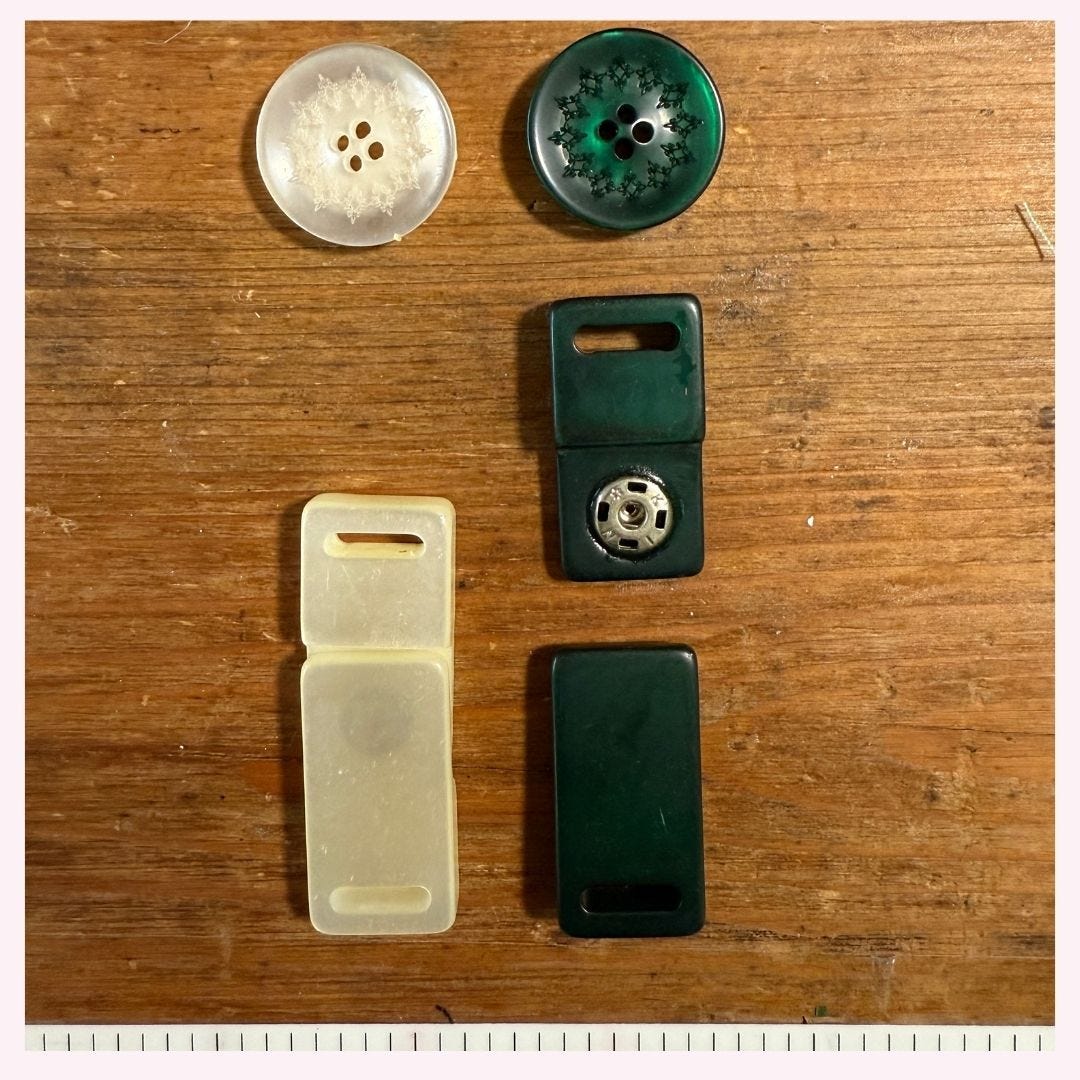Dye Another Day: My Adventures in Colouring Vintage Linens (and Buttons!)
A colourful tale of trial, error, and triumph—dyeing vintage linens, buttons, and more with a touch of DIY magic.
One of my favourite hobbies—though admittedly a slightly niche one—is dyeing vintage linens. Like many of the quirks that have become second nature to me, it all started with a problem to solve. When you spend as much time at flea markets as I do, you begin to notice a recurring theme: stacks of vintage linen, often pristine in quality but lacking in colour or flair. It took me an embarrassingly long time to realise that dyeing these could turn them into exactly what I needed—especially when it came to finding a tablecloth large enough for my extendable dining table.
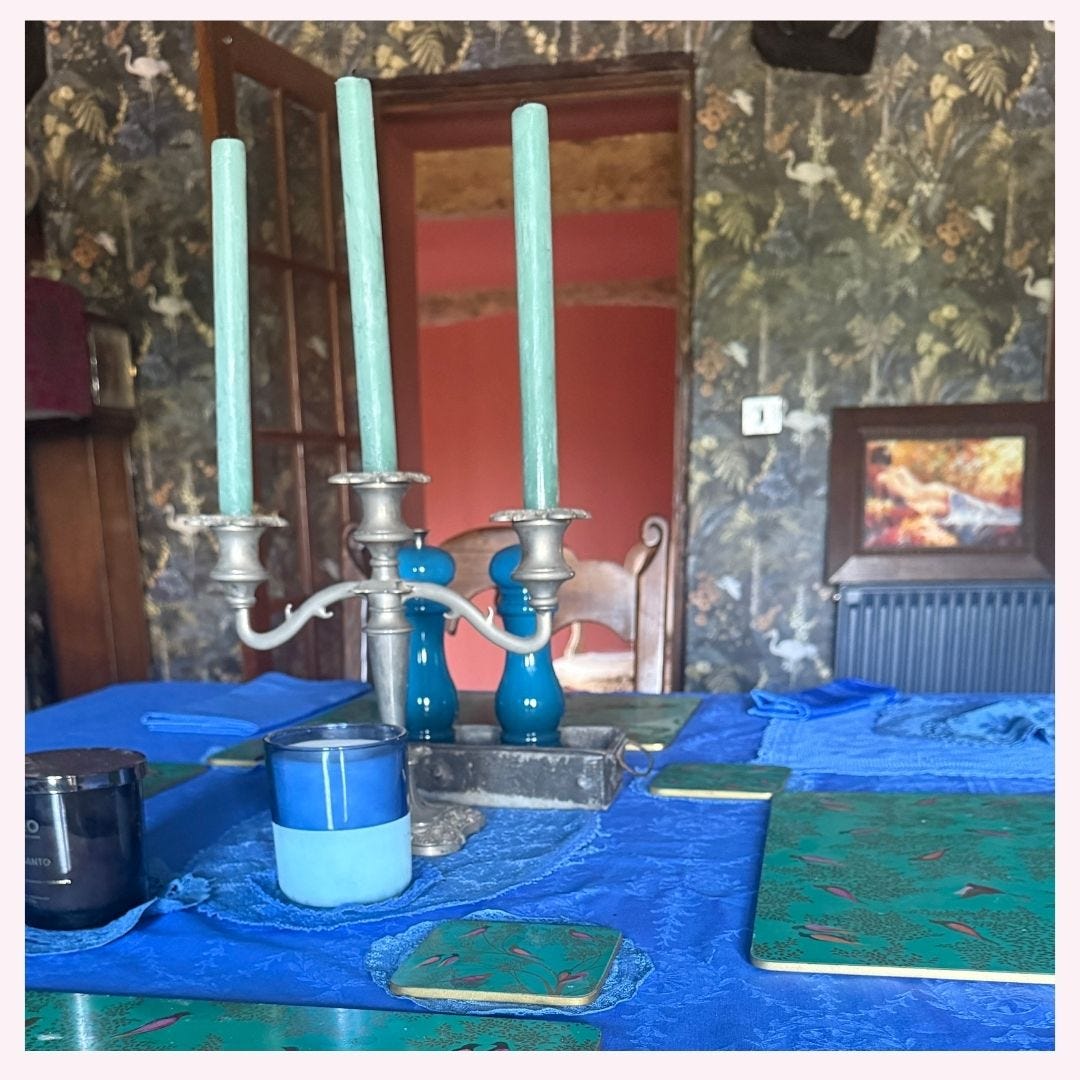
White is a strict no-no in my house (red wine and tomato sauce are frequent guests), but linen takes dye like a dream. I soon found that antique linen sheets make the perfect oversized tablecloths once they've had a colour refresh. That said, my journey with dye has included its fair share of hiccups—especially in the early days.
My First Forays into Dye
I was first introduced to dyeing in the 1980s thanks to Dylon’s iconic circular tins. I’d stir the bubbling dye bath on the hob, nose wrinkled at the caustic smell wafting through the kitchen. Results varied, but the thrill of transformation was addictive. Years later, when I started What Katie Did, I found myself returning to Dylon—this time in the form of their machine dyes—to give Rago shapewear a vintage-hued makeover. It was a different time, when concerns about fumes and eco-friendliness weren’t quite so front and centre.
Today, however, things have changed. Dylon’s current range is far gentler and only works on natural fibres. If you’re hoping to dye synthetics at home, the options are far more limited—and the process a bit more temperamental.
Buttons, Buckles, and Petticoats
I’ve been collecting vintage buttons for years to use on What Katie Did pieces. My button supplier once told me that most were originally produced in either black or white, with the white ones dyed to match garments. She used vintage Dylon found on eBay or commercial Dylon in large tins—great for a factory, less ideal for small projects.
While visiting our factory in India last year, I asked if we could custom dye a batch of our nylon petticoats. When the answer came back as yes, I cheekily asked if I could throw in some vintage buttons too. The results were brilliant—both the buttons and the buckle I’d included came out beautifully dyed. I haven’t found the right project for them yet, but I’m itching to!
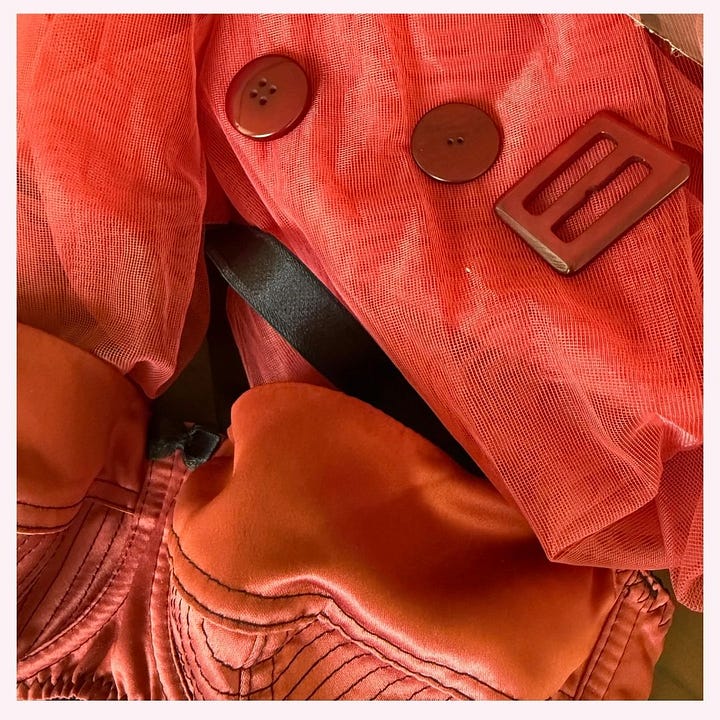
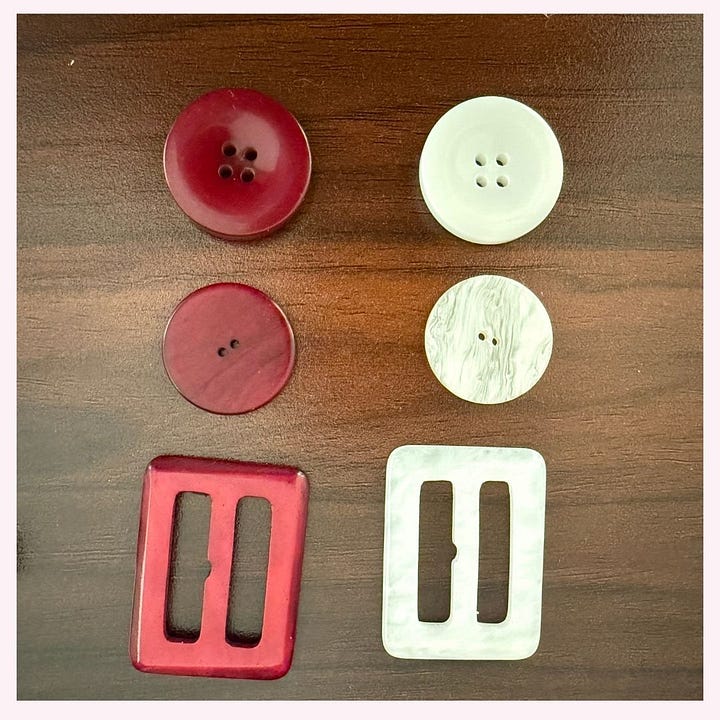
Home Dyeing Synthetics: A Bit of a Gamble
Fast-forward to a recent photoshoot deadline. I needed a green petticoat, and it looked like it wouldn’t arrive in time. I scoured the internet for something—anything—that could dye synthetic fibres at home and finally discovered iDye Poly. Once again, I slipped in a few buttons with the petticoat. The buttons? Perfection. The petticoat? Not quite the shade I’d hoped for.
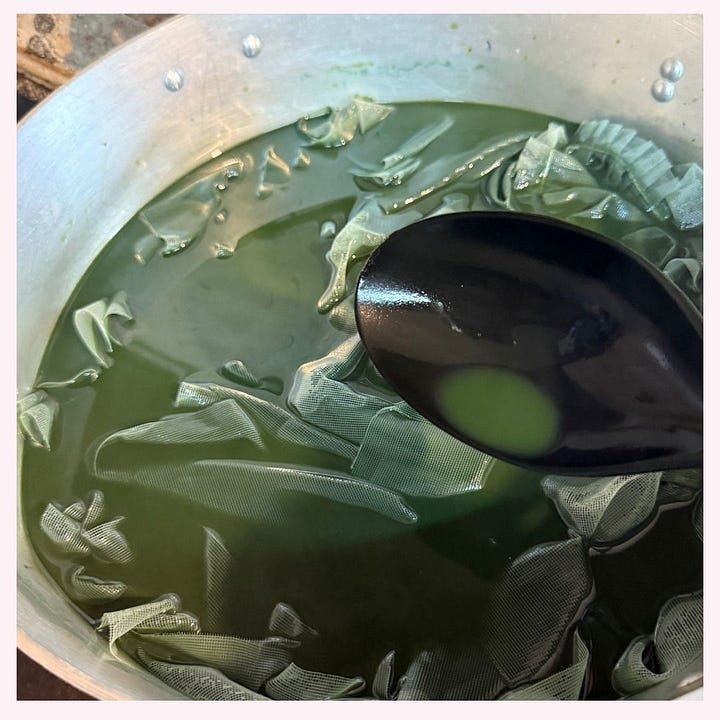

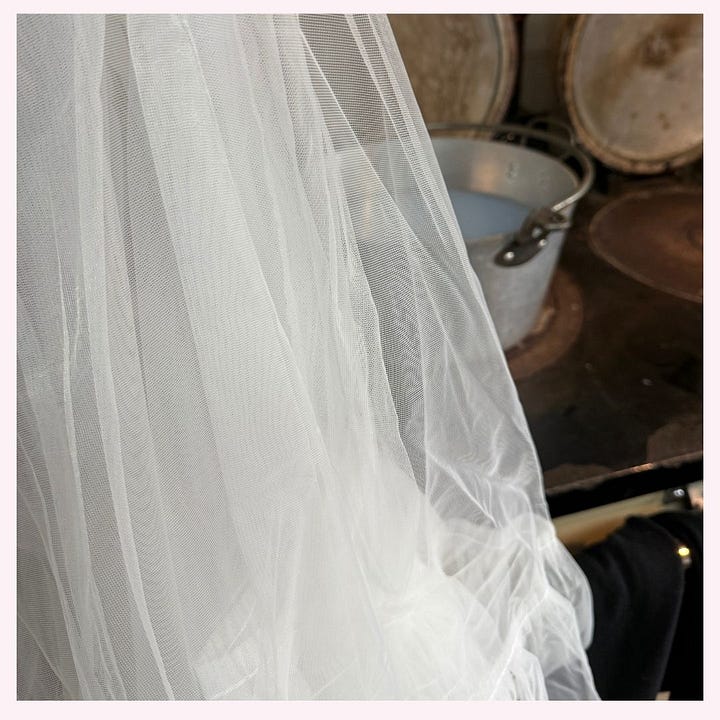
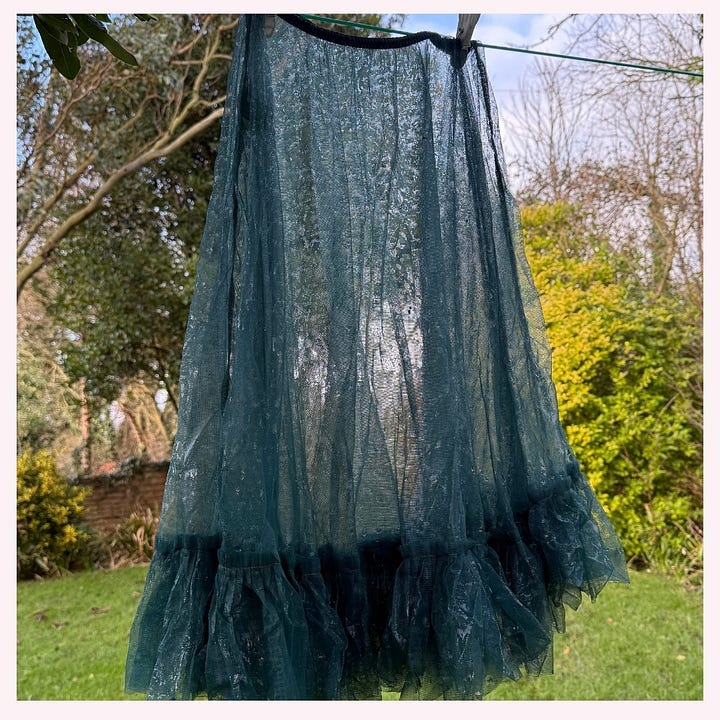
iDye Poly is one of the few home options for synthetics, but the shade range is limited. And yes—the smell is still there, albeit less aggressive than Dylon’s original brew from my teens. Still, it works in a pinch.
Natural Fibres: Where the Magic Happens
Natural fibres, on the other hand, are a delight to work with. I’ve had great success dyeing vintage linen sheets, cotton tablecloths (especially those with cotton lace trims), and even Irish rayon tablecloths. A few years ago, I had grand plans to turn those Irish rayons into lingerie, but the weave proved too loose and the post-wash creases too many. While I don’t mind ironing my own French knickers, I wasn’t convinced customers would be as keen. But for tablecloths? They’re fantastic.
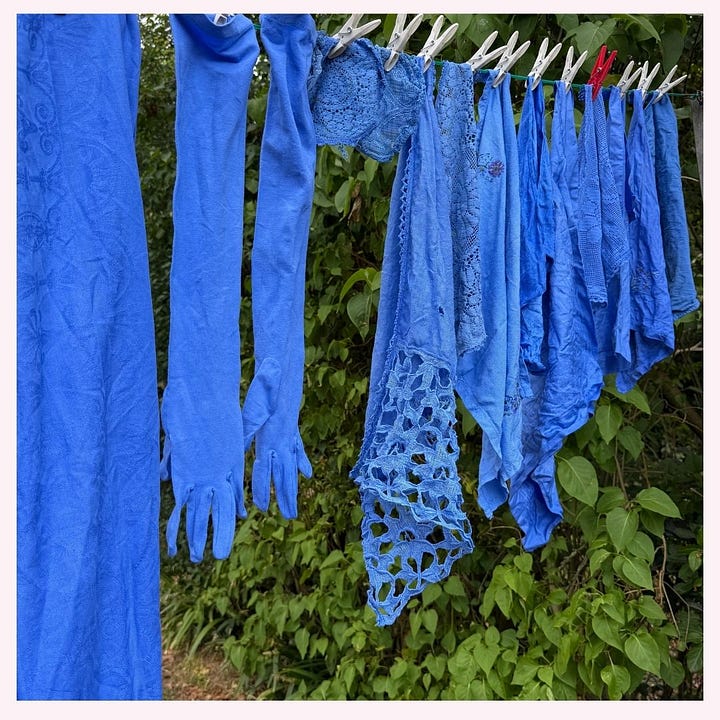
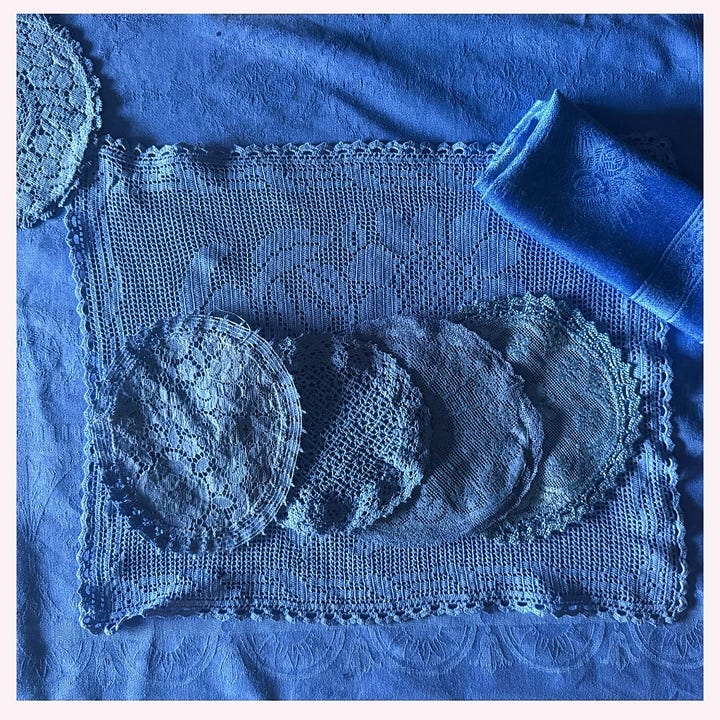
Proceed with Caution: Not Everything Dyes Evenly
One thing to be aware of when dyeing already-made garments is that fabric content can be deceiving. I once dyed a 100% cotton nightdress navy blue, only to discover the stitching was polyester—so while the fabric dyed beautifully, the seams stayed glaringly white. I didn’t mind the contrast, but if you’re after a uniform look, that’s something to bear in mind.
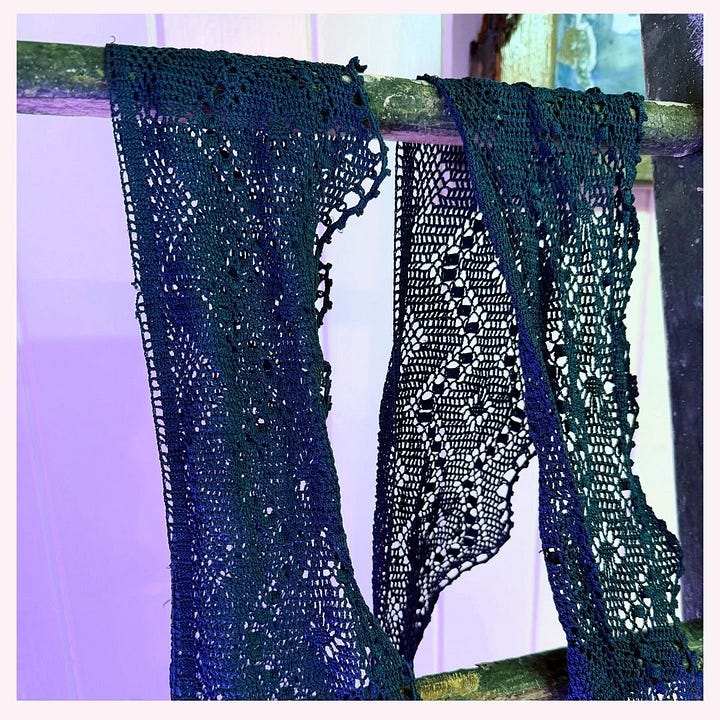
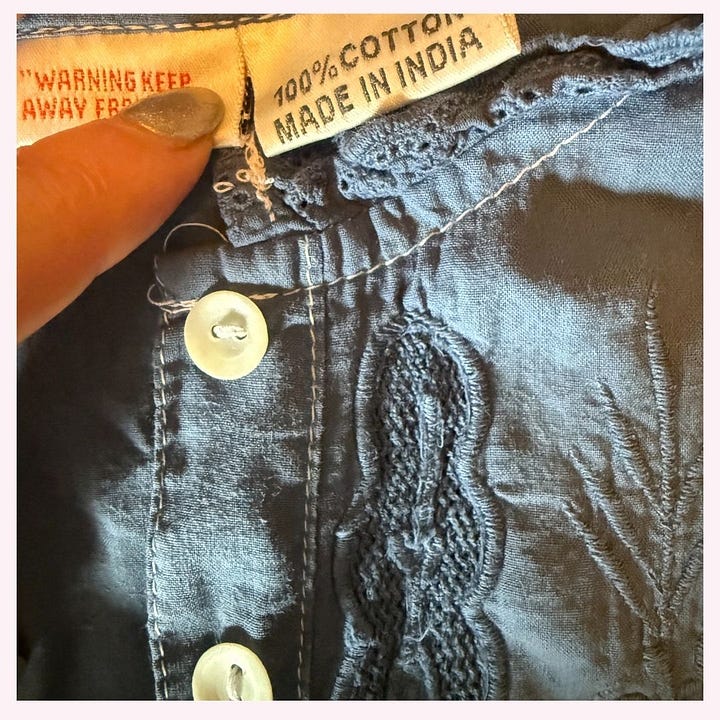
The same thing happened in the early days of dyeing Rago shapewear. Each component—lace, mesh, lining—would absorb the dye differently. To combat this, I stuck with pastel shades like baby blue and dusky pink, which softened the inconsistencies and gave a charmingly faded, vintage finish.
My advice? If you’re unsure about fabric composition, err on the side of light colours. I recently dyed some cotton lace trim black for a Victorian-style bloomer project, and the results varied wildly from piece to piece. Luckily, I liked the mismatched effect. But if you’re aiming for consistency, it could be a letdown.
Start Small, Experiment Boldly
If you’re tempted to try your hand at dyeing, start small. Linen napkins or antique tablecloths are often shockingly cheap at flea markets and thrift shops. They're also wonderfully forgiving to dye. There’s a certain magic in giving something old and overlooked a new lease on life—especially when it ends up in daily use, soaked in history and colour.
And if you ever find yourself far too excited about a perfectly dyed vintage button, know you’re in good company.
Links:
The Dye Shop (UK)
Katie Thomas is the founder of What Katie Did, a vintage-inspired lingerie and fashion brand that brings mid-century glamour to modern wardrobes. When not designing new collections, she can be found hunting for vintage treasures across Somerset and beyond.
Curious to explore more vintage-inspired treasures? Our lovingly crafted lingerie and fashion collections at What Katie Did bring the elegance of yesteryear into your modern wardrobe, from perfectly structured corsets to the most delicate of intimates. Each piece tells its own story of timeless glamour.




